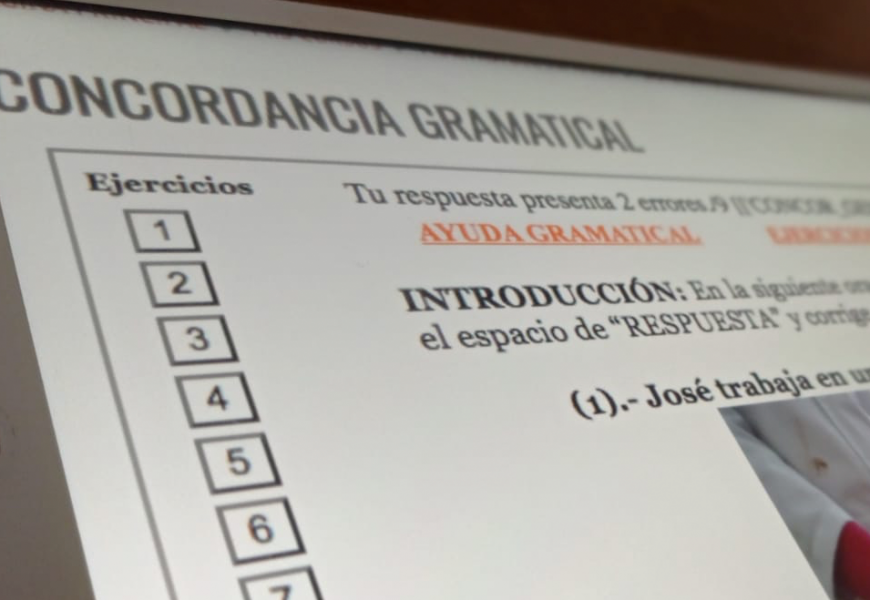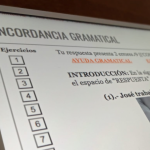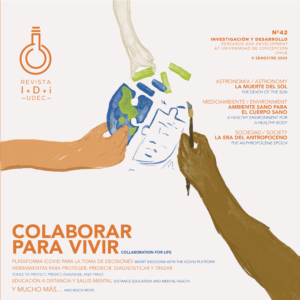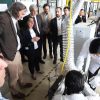Spanish as a second language, (SSL) (ELE)
With increasingly blurred borders, globalization has been permeating all areas of our lives. Student mobility, labor and academic exchanges, international collaboration and migration in general, show a scenario in which to have a common language is urgent. The teaching of Spanish to foreigners is experiencing its heyday and, at Universidad de Concepción, the study of the methodologies for its learning too.
By Monserrat Quezada
/ monquezada@udec.cl
/ Photographies: Courtesy of the Spanish Department
One of the most relevant educational needs of recent times, for both foreign students and non-native Spanish migrants, is to have a teaching-learning of Spanish as a Foreign Language (also called ELE, for its Spanish acronym) which allows students to improve their level of proficiency in the language to complete their secondary or higher education or to develop professionally. “This contributes to a better integration and insertion in society, education and the labor world”, comments Doctor Anita Ferreira, who has dedicated herself to contributing with different developments to make the teaching process of learning the language more efficient and effective, with her research. Her investigation is framed in the context of the ADELE research group, which means Acquisition and Teaching of Spanish as mother tongue, foreign language and second language.
CORPUS OF LEARNERS
One of these developments is the CAELE Corpus, the most relevant corpus of Spanish learners and one of the few that exist to date.
A corpus of learners is a collection of texts or language samples of people who are learning a new language, which are collected computationally, in such a way that allows searches and crossed data, such as, which are the most common errors of who are acquiring this new language according to their mother tongue (L1) or level of competence (beginning, intermediate, advanced).
The CAELE is an open inventory that has 1,217 academic texts produced by 201 learners of different mother tongues and levels of competence in ELE. Students come from foreign universities, and they are undergraduate and postgraduate students. The texts were collected between 2014 and 2019, and they were labeled and processed in digital format. The main objective is to determine the most frequent and systematic errors to support the processes of grammatical correction and linguistic precision through Written Corrective Feedback strategies (FCE).
“The results suggest an important trend on robust evidence regarding the order in which errors should be treated according to the level of competence and type of strategy in the writing correction process,” explained the researcher.
WRITTEN CORRECTIVE FEEDBACK
Written Corrective Feedback (WCF) is a crucial issue in the field of Second Language Acquisition (SLA). This consists in the error feedback, which can be direct, that is, pointing out the error and indicating what the correct way would be; or indirectly, in which the error is pointed out but the correct form is not communicated, expecting that the learner resort to their own previous knowledge to find it.
FCE helps to develop metalinguistic awareness through selective error attention focused on the writing process in order to improve linguistic accuracy. “It is about raising the level of linguistic awareness of foreign students, drawing their attention to their recurrent errors through key metalinguistic information so that they notice or perceive their problems and improve their understanding, thus optimizing their writing skills” concluded Doctor Ferreira.

INTELLIGENT TUTORIAL SYSTEM
The Intelligent Tutorial Systems (ITS) for foreign languages are based on the developments of Artificial Intelligence, mainly in the Natural Language Processing concerning the use of computational techniques and algorithms for the Comprehension of Natural Language and Natural Language Generation.
“Based on the problem of linguistic precision in written production, we have been building ELE-TUTORA (Intelligent Tutorial System for Spanish as a Foreign Language). This system is capable of behaving as an expert, both in the grammatical domain of Spanish and in the methodological domain, where it can diagnose the linguistic error in the student’s text and, accordingly, to offer an action or strategy that allows the student to progress in learning”, says Professor Ferreira.
This computational system is programmed in Python and it has the implementation of a grammar of buggy rules and a lexicon that allows it to identify errors. Its design corresponds to a dynamic architecture, in order to avoid future stiffening and to improve its functioning.
BLENDED-LEARNING MODEL
Regarding second language learning, Doctor Ferreira’s research also provides evidence, specifically about the effectiveness of blended teaching modalities vs. face-to-face, something more than important in current times due to confinement and the rise of online study and work.
The results show that the increase of the language learning such as English or Spanish as a foreign language was higher in the experimental groups which participated in the blended modality compared to the control groups that worked with the face-to-face modality. “It is proposed, then, that the design of platforms for language teaching include and implement methodological models of Blended Learning”.
“Since Computer Assisted Language Learning, (CALL) has taken over an important role in foreign language teaching and learning, not only robust empirical evidence on the utility of technology-mediated environments is needed but also how the learning process is improved in such situations”, indicated Ferreira.
For more information:
aferreir@udec.cl
Last modified: 2 de junio de 2023






